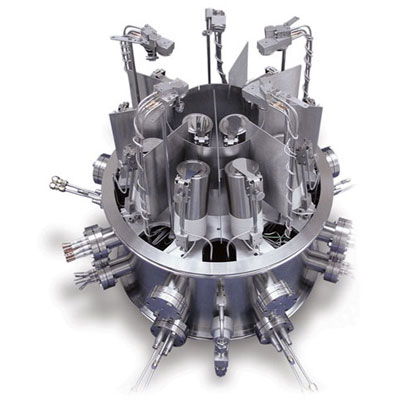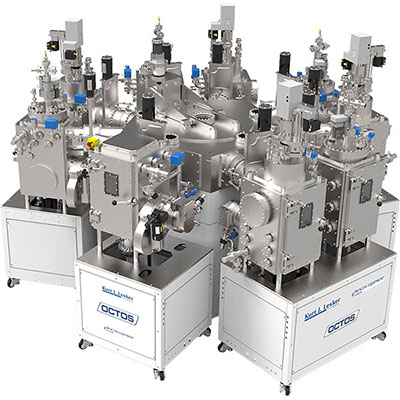Indium (In) Wire Evaporation Materials
Indium (In) Wire Overview
We sell these pellets and pieces by unit weight for evaporation use in deposition processes. These approximate materials prices are published to provide budgetary guidelines. Actual prices can vary and may be higher or lower, as determined by availability and market fluctuations. To speak to someone directly about current pricing, please click here .
Indium (In) General Information
Indium is a post-transition metal with properties similar to gallium. It is soft and metallic-gray in color. It has a density of 7.3 g/cc, a melting point of 157°C, and a vapor pressure of 10-4 Torr at 742°C. One of its notable characteristics is its ability to cling to glass and other similar surfaces. Indium compounds are evaporated under vacuum to form thin films in the production of electronics and photovoltaic cells. Pure indium is utilized as a film layer in semiconductors.
Indium (In) Specifications
| Material Type | Indium |
| Symbol | In |
| Atomic Weight | 114.818 |
| Atomic Number | 49 |
| Color/Appearance | Silvery Lustrous Gray, Metallic |
| Thermal Conductivity | 82 W/m.K |
| Melting Point (°C) | 157 |
| Coefficient of Thermal Expansion | 32.1 x 10-6/K |
| Theoretical Density (g/cc) | 7.3 |
| Z Ratio | 0.841 |
| E-Beam | Excellent |
| Thermal Evaporation Techniques |
Boat: W, Mo Basket: W Crucible: Gr, Al2O3 |
| E-Beam Crucible Liner Material | FABMATE®, Graphite, Molybdenum |
| Temp. (°C) for Given Vap. Press. (Torr) |
10-8: 487 10-6: 597 10-4: 742 |
| Comments | Wets W and Cu. Use Mo liner. Low Melting Point materials not ideal for sputtering. |
| Suggested QCM Crystal | Alloy Crystal: 750-1002-G10**** |
**** Suggestion based on previous experience but could vary by process. Contact local KJLC Sales Manager for further information
Empirical Determination of Z-Factor
Unfortunately, Z Factor and Shear Modulus are not readily available for many materials. In this case, the Z-Factor can also be determined empirically using the following method:
- Deposit material until Crystal Life is near 50%, or near the end of life, whichever is sooner.
- Place a new substrate adjacent to the used quartz sensor.
- Set QCM Density to the calibrated value; Tooling to 100%
- Zero thickness
- Deposit approximately 1000 to 5000 A of material on the substrate.
- Use a profilometer or interferometer to measure the actual substrate film thickness.
- Adjust the Z Factor of the instrument until the correct thickness reading is shown.
Another alternative is to change crystals frequently and ignore the error. The graph below shows the % Error in Rate/Thickness from using the wrong Z Factor. For a crystal with 90% life, the error is negligible for even large errors in the programmed versus actual Z Factor.

Thermal Evaporation of Indium (In)
When depositing any material in a vacuum system, there should be a lot of consideration taken upfront. Indium is not particularly problematic; however, any residual indium in the system will vaporize if it reaches a high enough temperature during subsequent deposition runs. It is recommended to use adequate foil shielding which can be removed after deposition is complete.
Indium can be thermally evaporated out of a tungsten basket heater with an aluminum oxide crucible, such as our EVB8B3030W and EVC9AO. Overspray can be limited to some degree by reducing the amount of material loaded in the crucible. Crucibles should be stored in a cool, dry place and always handled with gloves or forceps.
E-beam Evaporation of Indium (In)
Indium can be e-beam evaporated from a FABMATE®, graphite, or molybdenum crucible liner and is rated excellent for e-beam evaporation. A key process note is to consider the fill volume in the e-beam application because we find that the melt level of a material in a crucible directly affects the success of the crucible liner. Overfilling the crucible will cause the material to spill over and create an electrical short between the liner and the hearth. The outcome is cracking in the crucible. This is the most common cause of crucible liner failure. Placing too little material in the crucible or allowing the melt level to get too low can be detrimental to the process as well. When the melt level is below 30%, the e-beam is likely to strike the bottom or walls of the crucible which immediately results in breakage. Our recommendation is to fill the crucible between 2/3 and 3/4 full to prevent these difficulties.
Crucible liners should be stored in a cool, dry place and always handled with gloves or forceps.
See highlighted results that match your result in the table below.
Ordering Table
| More Info | Material | Description | Size | Quantity | Purity | Part Number | Price | In Stock | Add To Cart |
|---|---|---|---|---|---|---|---|---|---|
| More Info | Material | Description | Size | Quantity | Purity | Part Number | Price | In Stock | Add To Cart |
| Indium |
INDIUM WIRE, |
0.5mm Dia. | 10m | 99.999% | EVMIN50.5X10 | P.O.R. |
|
||
| Indium |
INDIUM WIRE, |
1mm Dia. | 1m | 99.99% | EVMIN400401M | P.O.R. |
|
||
| Indium |
INDIUM WIRE, |
1mm Dia. | 2m | 99.999% | EVMIN500402M | P.O.R. |
|






